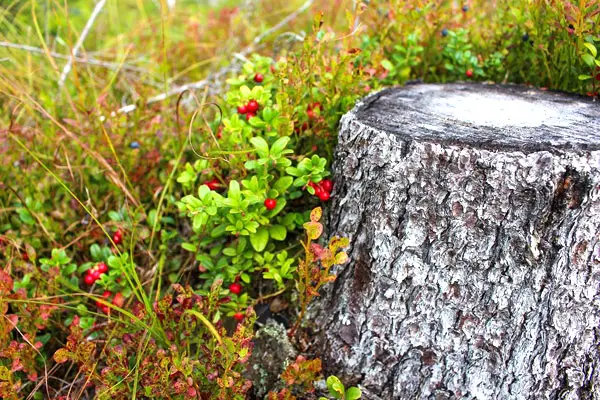So, there’s this tree stump in your backyard that you want to get rid of because it’s taking up space and you don’t have any use for it anymore. But, the thing is, tree stumps can be so hard to remove, especially if you don’t know how to do it right.
There are more labor intensive methods your can use to get rid of your trees stump. Things, such as, grinding it down or digging it out of the ground. These methods are usually hard and expensive. A great alternative that is fairly easy and doesn't cost much is to use Epsom salt to remove your tree stump.
Epsom salt is commonly used in the bathroom or as a fertilizer for plants. But in stronger doses, it can be a good agent to get rid of that stubborn tree stump in your backyard too. Here’s how:
When is Epsom salt ideal for killing a tree stump?
Using Epsom salt is an excellent option if you’re not willing to spend a lot on removing a tree stump. You can take the easy way and hire a tree surgeon but that will cost you a lot.
Instead, you can buy Epsom salt in bulk. You can use some to get rid of your tree stump and use the rest of the Epsom salt in home. You can use it on things like cleaning your tiles or making a facial scrub. This means you’re saving money and you’re also not wasting the product for just one job.
This homemade technique is also beneficial since you don’t need to do the hard work yourself. You just need to create the Epsom salt solution and let it do its job. You don’t need to get your hands dirty and spend a lot of time trying to remove that stubborn tree stump manually.
You just need to remember that Epsom salt usually takes hours or even days to dry out the roots of the tree stump before you can remove it. This means you need to be extra patient when using this method.
How long does it take to kill a stump using Epsom salt?
Each tree stump will react differently to the Epsom salt solution, so there’s really no specific time frame for when you can remove it. Smaller tree stumps from younger trees that haven’t spread their roots deeply yet may take only a few hours to dry out after being poured with the Epsom salt solution.
However, bigger and older tree stumps could take a few days or even months depending on how deep their roots have grown under the ground. Just make sure to check the stump every now and then. Add more Epsom salt if it’s still not completely dried out.
How much Epsom salt should you use?
Again, this will depend on how big or old the tree was when it was cut down to the stump. The solution will generally be two parts water to one part Epsom salt.
You need to pour enough of the Epsom salt solution on the tree stump to let it dry out before you can easily remove it. You can add more of this solution if the tree stump still hasn’t dried out after a while or if its roots are being too stubborn to remove.
For smaller trees, one to two pound of Epsom salt will work. For large trees, you could be looking at ten or more pounds of Epsom salt.
What are the safety considerations when using Epsom salt?
Since Epsom salt is primarily created for plants, you don’t have to worry about it affecting your garden as long as you don’t spill a lot directly on your plants. Epsom salt is good for plants at a certain level. But since you’re killing a tree stump, you should be careful with the higher doses around your other plants.
Epsom salts marked “USP” are suitable for humans because they are certified by the United States Pharmacopeia (USP) and the FDA.
You also need to practice extra caution when handling Epsom salt because it contains natural laxative properties that could have some effects to your body if accidentally ingested. Do not ingest Epsom salt. There are possible side effects that can be life threatening.
Make sure to wear gloves when holding Epsom salt and keep it away from children and pets.
What are the steps to removing a tree stump with Epsom salt?
There are two methods to using Epsom salt for killing a tree stump and your choice will depend on what suits your situation best:
Soaking method
- Start by mixing together Epsom salt and water in a one-to-two ratio. For a regular-sized tree stump, you will need at least one gallon of Epsom salt and two gallons of water, but you can make more if you’re dealing with a bigger stump.
- Pour the solution on the stump and the exposed roots until they’re fully soaked. Then, cover the stump with a tarp and keep adding more Epsom salt mixture to it every week until you see that the stump is dried out.
Drilling method
- Use a 1-inch drill bit to drill several holes into the tree stump making sure that you leave a few inches between each hole. Your holes should also be at least 8 inches deep, but you can always go as deep as you can, especially if you’re dealing with a big stump.
- Pour pure Epsom salt directly into each hole filling it to the top. Then, pour water into each hole to moisten the Epsom salt. Make sure that the salt doesn’t overflow.
- If you’re doing this during the rainy season, cover the stump with a tarp to keep the rain from soaking the holes too much and diluting the Epsom salt.
- You can repeat this process every three weeks until the tree stump is completely dried out. Make sure that the wood is dark and brittle before you start removing it.
Whatever method you use for killing a tree stump, it’s very important to do it with patience. You can’t expect the stump to be killed within a few hours, especially if it has been in your backyard for a long time and has deep roots.
When the tree stump is all dried out and dead, you can leave it to decompose naturally. This may take months for it to completely be absorbed into the ground. Your other option is to remove parts on the surface and let parts below the surface decompose.
To speed up this process, you can put high nitrogen fertilizer around the base of the stump. You can also start digging the stump to remove and dispose it.
Once the spot is clear, fill the hole with soil and use the area to plant new flowers or just cover it with lawn seed. You can also replace the stump with decor or outdoor furniture.
Palm tree stumps need special care, read our post on removing a palm tree stump to better understand how to remove them.

